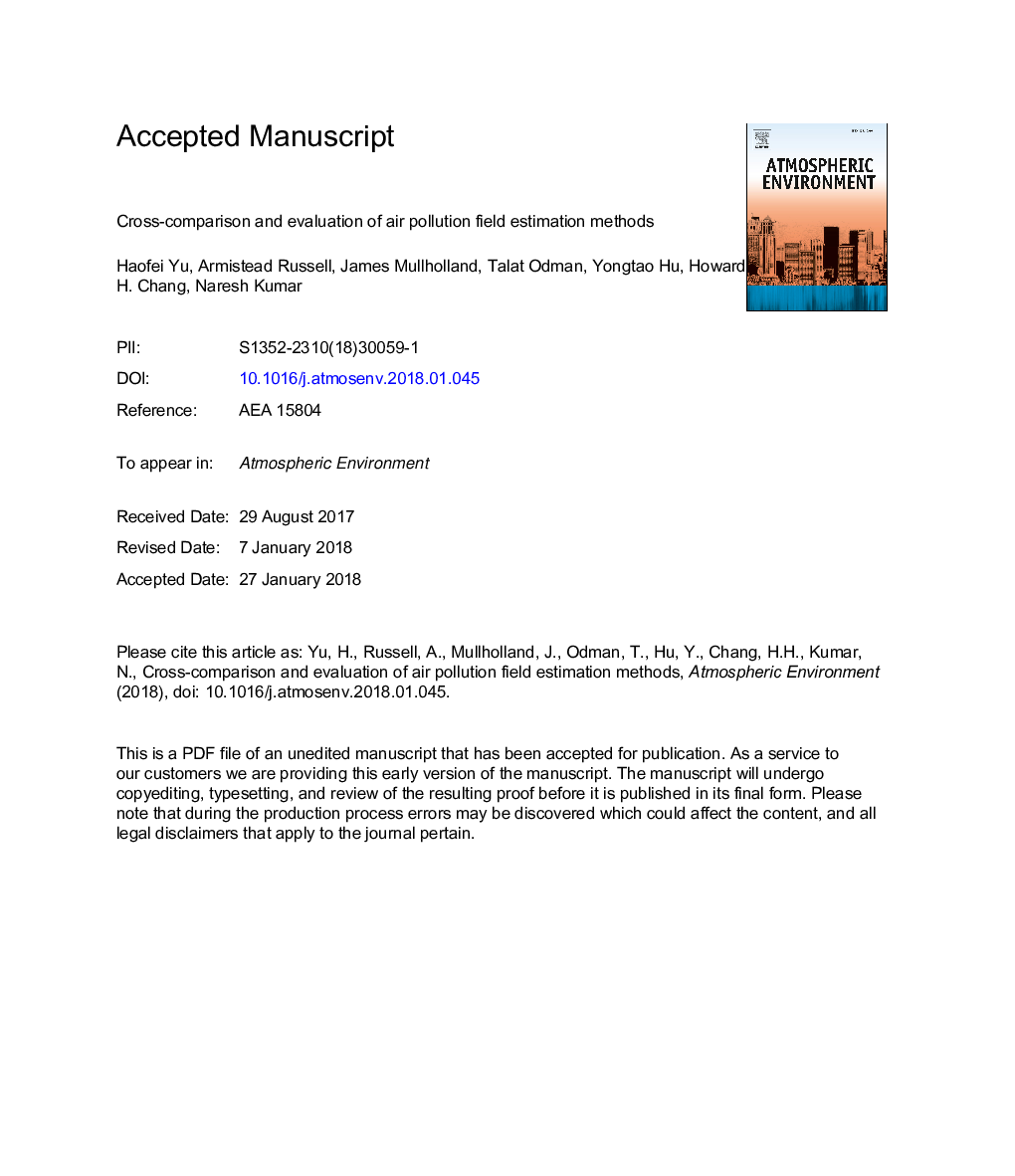| کد مقاله | کد نشریه | سال انتشار | مقاله انگلیسی | نسخه تمام متن |
|---|---|---|---|---|
| 8863950 | 1620295 | 2018 | 29 صفحه PDF | دانلود رایگان |
عنوان انگلیسی مقاله ISI
Cross-comparison and evaluation of air pollution field estimation methods
ترجمه فارسی عنوان
مقایسه و ارزیابی روشهای برآورد آلودگی هوا
دانلود مقاله + سفارش ترجمه
دانلود مقاله ISI انگلیسی
رایگان برای ایرانیان
کلمات کلیدی
آلودگی هوا، برآورد قرار گرفتن در معرض، تاثیرات بهداشتی، همجوشی داده ها، مدل ترکیبی
موضوعات مرتبط
مهندسی و علوم پایه
علوم زمین و سیارات
علم هواشناسی
چکیده انگلیسی
Accurate estimates of human exposure is critical for air pollution health studies and a variety of methods are currently being used to assign pollutant concentrations to populations. Results from these methods may differ substantially, which can affect the outcomes of health impact assessments. Here, we applied 14 methods for developing spatiotemporal air pollutant concentration fields of eight pollutants to the Atlanta, Georgia region. These methods include eight methods relying mostly on air quality observations (CM: central monitor; SA: spatial average; IDW: inverse distance weighting; KRIG: kriging; TESS-D: discontinuous tessellation; TESS-NN: natural neighbor tessellation with interpolation; LUR: land use regression; AOD: downscaled satellite-derived aerosol optical depth), one using the RLINE dispersion model, and five methods using a chemical transport model (CMAQ), with and without using observational data to constrain results. The derived fields were evaluated and compared. Overall, all methods generally perform better at urban than rural area, and for secondary than primary pollutants. We found the CM and SA methods may be appropriate only for small domains, and for secondary pollutants, though the SA method lead to large negative spatial correlations when using data withholding for PM2.5 (spatial correlation coefficient Râ¯=â¯â0.81). The TESS-D method was found to have major limitations. Results of the IDW, KRIG and TESS-NN methods are similar. They are found to be better suited for secondary pollutants because of their satisfactory temporal performance (e.g. average temporal R2â¯>â¯0.85 for PM2.5 but less than 0.35 for primary pollutant NO2). In addition, they are suitable for areas with relatively dense monitoring networks due to their inability to capture spatial concentration variabilities, as indicated by the negative spatial R (lower than â0.2 for PM2.5 when assessed using data withholding). The performance of LUR and AOD methods were similar to kriging. Using RLINE and CMAQ fields without fusing observational data led to substantial errors and biases, though the CMAQ model captured spatial gradients reasonably well (spatial Râ¯=â¯0.45 for PM2.5). Two unique tests conducted here included quantifying autocorrelation of method biases (which can be important in time series analyses) and how well the methods capture the observed interspecies correlations (which would be of particular importance in multipollutant health assessments). Autocorrelation of method biases lasted longest and interspecies correlations of primary pollutants was higher than observations when air quality models were used without data fusing. Use of hybrid methods that combine air quality model outputs with observational data overcome some of these limitations and is better suited for health studies. Results from this study contribute to better understanding the strengths and weaknesses of different methods for estimating human exposures.
ناشر
Database: Elsevier - ScienceDirect (ساینس دایرکت)
Journal: Atmospheric Environment - Volume 179, April 2018, Pages 49-60
Journal: Atmospheric Environment - Volume 179, April 2018, Pages 49-60
نویسندگان
Haofei Yu, Armistead Russell, James Mulholland, Talat Odman, Yongtao Hu, Howard H. Chang, Naresh Kumar,
